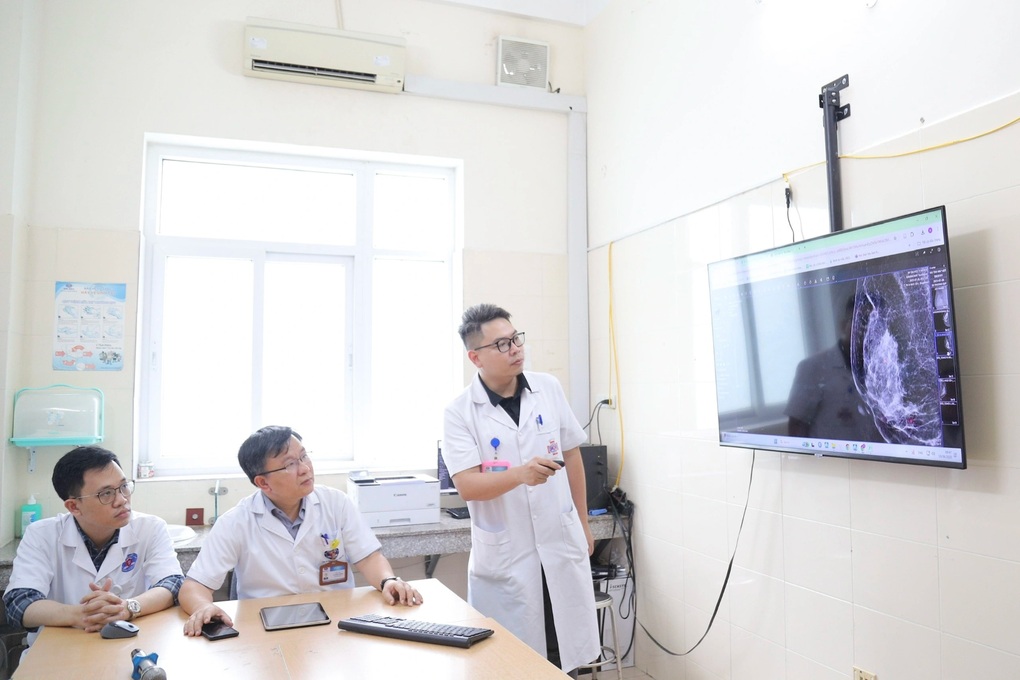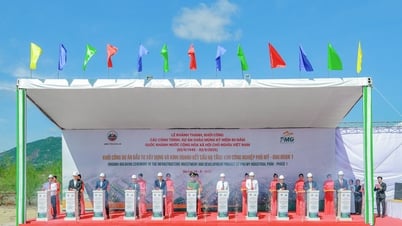On August 19, K Hospital officially deployed the application of information technology and electronic medical records in medical examination and treatment, after a trial period.
Prof. Dr. Le Van Quang, Director of K Hospital, said that after efforts to build a digital database and more than 4 months of testing and piloting at hospital facilities, electronic medical records were officially applied, solving the huge volume of previous paper records.

Patient films are saved on the data system, saving printing costs and helping doctors track patient records and treatment processes conveniently (Photo: TM).
Accordingly, with 2,400 beds, in 2024, K Hospital will receive more than 436,000 medical examinations, 68,119 inpatients, 31,683 surgeries and 262,607 MRI and CT scans, and 4,488 other cases in specialized technical categories.
In addition, with the characteristics of cancer patients, long treatment and follow-up visits, some patients have thick medical records, the application of electronic medical records greatly helps to relieve the problem of record storage.

K Hospital officially deployed electronic medical records from August 19 (Photo: TM).
Since April 1, K Hospital has begun piloting electronic medical records at facility 1. Then, from June 1 to June 30, the hospital will continue to pilot at facility 2.
"Implementing electronic medical records to replace paper medical records brings many benefits to patients and medical staff , contributing to cost savings, improving productivity and quality of medical examination and treatment," Professor Quang assessed.
Instead of going to the hospital and having to wait a long time, patients can register for an appointment online via phone or mobile application.
All patient records are stored synchronously, helping doctors easily access and track medical examination and treatment history, thereby making more accurate diagnoses.
This system also helps reduce costs by eliminating the need to print documents, papers and films.
In addition, electronic medical records also allow data to be linked between medical facilities, helping patients avoid having to redo existing tests. Finally, it also increases transparency in health insurance management, reducing complicated administrative procedures.
Source: https://dantri.com.vn/suc-khoe/benh-nhan-khong-con-lo-canh-mat-giay-to-khi-di-kham-benh-20250819172307882.htm






















![[Photo] General Secretary To Lam attends the inauguration and groundbreaking ceremony of 250 projects to celebrate National Day](https://vphoto.vietnam.vn/thumb/1200x675/vietnam/resource/IMAGE/2025/8/19/3aa7478438a8470e9c63f4951a16248b)

![[Photo] President Luong Cuong's wife and Queen of Bhutan visit Tran Quoc Pagoda](https://vphoto.vietnam.vn/thumb/1200x675/vietnam/resource/IMAGE/2025/8/19/62696af3852a44c8823ec52b03c3beb0)


![[Photo] General Secretary and Prime Minister visit the National Exhibition and Fair Center](https://vphoto.vietnam.vn/thumb/1200x675/vietnam/resource/IMAGE/2025/8/19/f4503ad032d24a90beb39eb71c2a583f)
![[Photo] Close-up of the first International Financial Center building in Ho Chi Minh City](https://vphoto.vietnam.vn/thumb/1200x675/vietnam/resource/IMAGE/2025/8/19/3f06082e1b534742a13b7029b76c69b6)

![[Photo] General Secretary To Lam and President Luong Cuong attend the handover ceremony of the Presidential Office Headquarters](https://vphoto.vietnam.vn/thumb/1200x675/vietnam/resource/IMAGE/2025/8/19/a37cfcbd301e491990dec9b99eda1c99)




































































Comment (0)